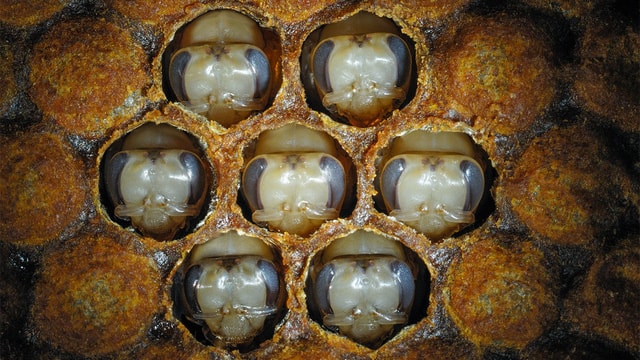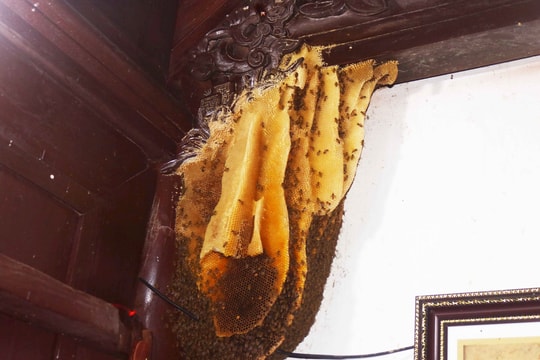Discover the secret that turns honey bees into queen bees
Not born with it, whether a honey bee becomes a worker bee or a queen bee depends on... its food.
 |
| The saying "You are what you eat" is especially true in the case of honeybees, because whether they become bees or not depends on their diet - Photo: Photo: Heid |
In a recent article onPLOS GeneticsScientists have found that molecules in the food mixture of honeybee larvae affect changes in their physiological characteristics.
This will determine whether they will become "queens" with long lifespans responsible for reproduction or "workers" with the responsibility of protecting larvae and finding food.
"You are what you eat"
Scientists have long known that this difference is not due to birth but to diet.
Larvae fed royal jelly - a substance secreted by worker bees - develop into queen bees, while those fed only a mixture of pollen and honey - called honey cake - become worker bees.
Previous research has focused largely on royal jelly, which is rich in sugars and proteins involved in sexual development, but the new study found a new mechanism: small molecules in plants called microRNAs (miRNAs).
These small molecules can influence the size and color of plants, and also play an important role in bee development.
Introduced into the bee's body through 'honey cake', miRNA can influence genes in a way that prevents physiological development and contributes to transforming the bee into infertility.
“Both are equally important,” says Chen-Yu Zhang, a professor of biochemistry and co-author of the study. “Royal jelly and miRNA both influence the sexual architecture of bees,” he adds.
Scientists raised bees in the lab to study the effects of miRNA. They found that larvae raised on a diet containing miRNA had smaller bodies and smaller ovaries than those raised normally.
Subsequent experiments further reinforced this view.
Interaction with plants
This information may provide a new look into the mysterious bee death phenomenon that has been increasing over the past 10 years, affecting many agricultural activities.
Xi Chen, a co-author of the study, said miRNAs play an important role. “We can test whether changing miRNAs in a particular plant can cause the disappearance of the bees that normally feed on that plant,” Chen said.
The study also showed a symbiotic relationship between plants and bees: miRNAs in plants can make flowers larger and more colorful, attracting more bees, which in turn help disperse seeds.
According to Dr. Philip Askenase - professor of medicine at Yale University, USA, further research on the mechanism of miRNA's influence on species of different kingdoms could help find ways to treat cancer or anti-allergy drugs.
“Some important biological questions can be explored from this new natural understanding,” said Dr. Askenase.
According to TTO
| RELATED NEWS |
|---|








